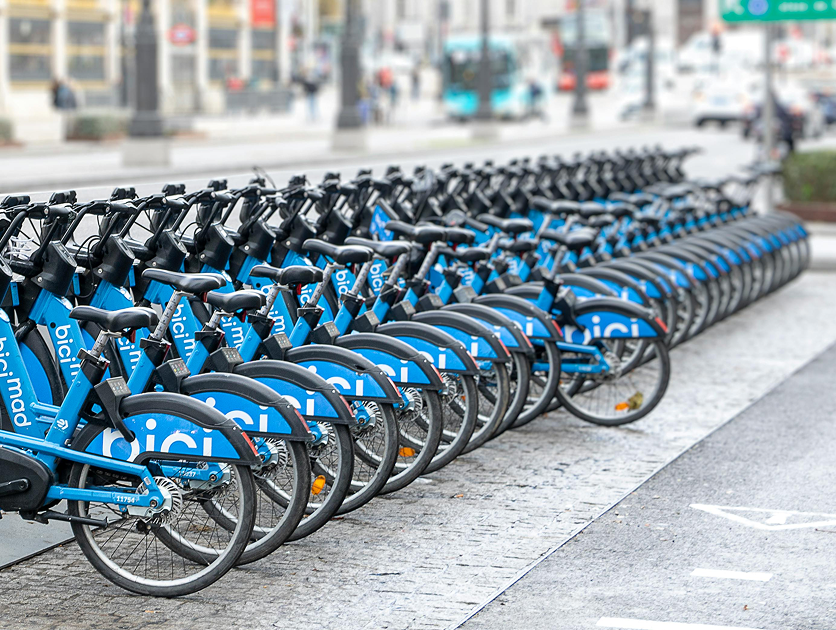Index
Receive our newsletter
Known as the "Invicta City," Porto is steeped in centuries of history and is the namesake of both Portugal and its world-famous Port wine. Its historic center was declared a UNESCO World Heritage Site in 1996, and the Port wine cellars in Vila Nova de Gaia—just across the river—are internationally renowned. Indeed, the city is celebrated for its wine, rich cuisine, and cultural heritage.
But beyond wine tourism, Porto offers a deeply authentic local lifestyle. If you're planning to spend some time in the city for work or study, here’s how to truly experience Porto, beyond the wine glass.
Cafés, bookstores and cultural spaces
Porto has a longstanding tradition of historic cafés and bookstores that have shaped the city’s intellectual life. One of the most iconic is Café Majestic, opened in 1921 on Rua de Santa Catarina. This art nouveau café was a hotspot for political, artistic, and literary gatherings in the 1920s. Tip: go early in the morning or mid-afternoon on a weekday to enjoy it in a more relaxed setting.
But the café scene extends far beyond Majestic. Café Progresso, established in 1899, is considered the city’s oldest café, recently renovated but still known for its excellent coffee and toast menu. For a more student-centered vibe, head to Café Piolho (officially named Âncora d’Ouro). For over 100 years, it's been a favorite meeting point for generations of university students. Grab a beer or coffee and take in the walls covered with student messages and memories.
When it comes to bookstores, the most famous is undoubtedly Livraria Lello e Irmão, with its dreamy staircase and intricately carved wooden shelves. It’s rumored to have inspired J.K. Rowling during her time living in Porto, so you’ll often see Harry Potter fans lining up to visit. Entry requires a ticket (which can be deducted from a book purchase), and it's best to plan ahead and go early.
For a quieter book-shopping experience, there are several gems off the beaten path. Livraria Poetria, focused on theater and poetry, is a hidden treasure, while Livraria Flâneur offers a curated selection of alternative and independent literature, often hosting cultural events and readings.
Markets and traditional food beyond the wine
Porto’s food scene is rooted in tradition and goes far beyond wine. Mercado do Bolhão, recently renovated, is considered the city’s culinary heart. It’s filled with fresh produce, dried cod, flowers, and small taverns offering an immersive local experience. Other notable markets include the more gourmet-style Mercado de Bom Sucesso and Feira da Vandoma, an open-air flea market perfect for bargain hunting.
As for traditional dishes, don’t miss the francesinha, a hearty sandwich loaded with meats and a secret sauce; Tripas à Moda do Porto, a traditional stew that gave locals the nickname tripeiros; grilled sardines served on bread; and codfish in all its many forms.
For dessert, pastéis de nata are a must, alongside local favorites like torta de São Bento and pão de ló de Ovar, best enjoyed in family-run taverns popular with locals.
Outdoor activities and green spaces
Porto isn’t just about its urban charm, it also invites you to get outdoors and enjoy its climate and proximity to the sea. Parque da Cidade, the city’s green lung and the only urban park in Europe with direct oceanfront access, offers wide trails, lakes, and a serene setting that leads straight to the beach.
The seaside promenade stretching from Castelo do Queijo to Matosinhos is ideal for walking, biking, or skating with stunning Atlantic views. Matosinhos Beach, a favorite among surfers and swimmers, is easily reachable via bike lanes from downtown. Further south, Gaia’s beaches, such as Miramar and Aguda, are perfect for peaceful walks among the dunes and seaside cafés.
In the heart of the city, the Crystal Palace Gardens (Jardins do Palácio de Cristal) offer postcard-worthy views over the Douro River and Gaia. With fountains, rose gardens, and wandering peacocks, it’s also the site of the city’s Book Fair, a local favorite featuring outdoor book stalls, music, and street food.
Lesser-known events and festivals
To truly understand Porto’s local culture, there’s nothing like joining its traditional festivities, where the whole city comes alive and visitors are warmly welcomed. The most iconic is the São João Festival, celebrated on June 23rd, with grilled sardines, paper lanterns lighting up the sky, and the quirky tradition of playfully hitting others on the head with toy hammers. The night ends with fireworks over the Douro and continues into the early hours with music and street parties.
Also worth experiencing is Queima das Fitas, the major university festival held in May, attracting thousands of students for a week of concerts, serenades, and all-night events at the massive Queimódromo venue, a mix of academic tradition and joyful chaos.
Throughout the year, the cultural calendar is packed with unique offerings like Serralves em Festa, a free 50-hour nonstop contemporary art festival, and neighborhood celebrations like the Festas dos Santos Populares, featuring music, dancing, and grilled sardines in June. Other notable events include Fantasporto, the international fantasy film festival in February; Festa do Outono; and São Martinho, where the smell of roasted chestnuts marks the start of cooler weather. These large and small-scale celebrations offer the chance to connect with locals and enjoy the city the way residents do—through music, food, and community.
Living in Porto means experiencing the city’s everyday life, connecting with its people, and being constantly surprised by its authenticity. From your daily coffee at a trusted neighborhood café to celebrating São João under a sky full of lanterns and plastic hammers, every moment becomes a memory that brings you closer to the city's hardworking and welcoming spirit. When it’s time to leave, you won’t just take home postcards and flavors—you’ll carry real memories of a city lived deeply. And as the saying goes, once you pass through Porto… you’ll always find your way back.









